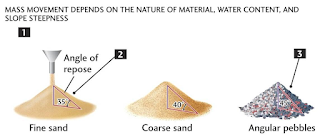BRACKETING AND MATRIXING DESIGNS (Q1D)
·
To reduce the
total number of samples to be tested, the ICH guidelines introduced the concept
of bracketing and matrixing.
·
BRACKETING
·
Definition: Bracketing is the design of a stability
schedule such that only samples on the extremes (high level) of certain design
factors (e.g., strength, container size and/or fill) are tested at all time
points as in a full design.
·
The use of a
bracketing design would not be considered appropriate if it cannot be
demonstrated that,
o
the strengths or
container sizes and/or fills selected for testing are actually the extremes
o
Bracketing can be
applied to studies with multiple strengths where the relative amounts of drug
substance and excipients change in a formulation.
·
An example of a
bracketing design is given in following Table.
o
This example is
based on a product available in three strengths and three container sizes.
o
In this example,
it should be demonstrated that the 15 ml and 500 ml high-density polyethylene
container sizes truly represent the extremes.
o
The batches for
each selected combination should be tested at each time point as in a full
design. Here, T = Sample tested
|
Strength
|
50 mg
|
75 mg
|
100 mg
|
|||||||
|
Batch
|
1
|
2
|
3
|
1
|
2
|
3
|
1
|
2
|
3
|
|
|
Container size
|
15 ml
|
T
|
T
|
T
|
|
|
|
T
|
T
|
T
|
|
100 ml
|
|
|
|
|
|
|
|
|
|
|
|
500 ml
|
T
|
T
|
T
|
|
|
|
T
|
T
|
T
|
|
MATRIXING:
·
Definition: Matrixing is the design of a stability
schedule such that a selected subset of the total number of possible samples
for all factor combinations would be tested at a specified time point.
·
At a subsequent
time point, another subset of samples for all factor combinations would be
tested.
·
The design assumes
that the stability of each subset of samples tested represents the stability of
all samples at a given time point.
·
The differences
in the samples for the same drug product should be identified as, for example,
covering different batches, different strengths, different sizes of the same
container closure system, and possibly, in some cases, different container
closure systems.
·
Each storage
condition should be treated separately under its own matrixing design.
·
Matrixing designs
can be applied to strengths with identical or closely related formulations.
·
Examples include are
(1) capsules of different strengths made with different fill plug sizes from
the same powder blend, (2) tablets of different strengths manufactured by
compressing varying amounts of the same granulation, and (3) oral solutions of
different strengths with formulations that differ only in minor excipients
(e.g., colourants or flavourings).
·
Design
Examples:
·
Examples of
matrixing designs on time points for a product in two strengths (S1 and S2) are
in table.
·
The terms “one-half
reduction” and “one-third reduction” refer to the reduction strategy initially
applied to the full study design.
o “One-half reduction” eliminates one in
every two time points from full study design &
o “One-third reduction” initially removes one
in every three time points.
o In the examples shown in Table, the reductions
are less than one-half and one-third due to the inclusion of full testing of
all factor combinations at some time points as discussed in section
o These examples include full testing at the
initial, final, and 12-month time points.
o
The ultimate
reduction in testing is therefore less than one-half (24/48) or one-third
(16/48), and is actually 15/48 or 10/48, respectively.
·
Table 2:
Examples of Matrixing Designs on Time Points for a Product withTwo
Strengths
·
“One-Half
Reduction” Key: T = Sample
tested
|
Time point (months)
|
0
|
3
|
6
|
9
|
12
|
18
|
24
|
36
|
||
|
Strength
|
S1
|
Batch 1
|
T
|
T
|
|
T
|
T
|
|
T
|
T
|
|
Batch 2
|
T
|
T
|
|
T
|
T
|
T
|
|
T
|
||
|
Batch 3
|
T
|
|
T
|
|
T
|
T
|
|
T
|
||
|
S2
|
Batch 1
|
T
|
|
T
|
|
T
|
|
T
|
T
|
|
|
Batch 2
|
T
|
T
|
|
T
|
T
|
T
|
|
T
|
||
|
Batch 3
|
T
|
|
T
|
|
T
|
|
T
|
T
|
||
·
“One-Third Reduction” , Key: T =
Sample tested
|
Time point (months)
|
0
|
3
|
6
|
9
|
12
|
18
|
24
|
36
|
||
|
Strength
|
S1
|
Batch 1
|
T
|
T
|
|
T
|
T
|
|
T
|
T
|
|
Batch 2
|
T
|
T
|
T
|
|
T
|
T
|
|
T
|
||
|
Batch 3
|
T
|
|
T
|
T
|
T
|
T
|
T
|
T
|
||
|
S2
|
Batch 1
|
T
|
|
T
|
T
|
T
|
T
|
T
|
T
|
|
|
Batch 2
|
T
|
T
|
|
T
|
T
|
|
T
|
T
|
||
|
Batch 3
|
T
|
T
|
T
|
|
T
|
T
|
|
T
|
||






Comments
Post a Comment